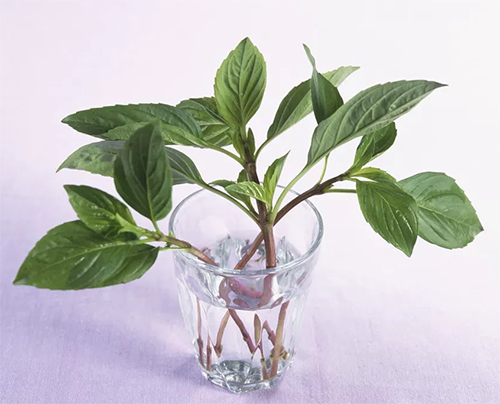by Linda Carloni, ABG Board member and Master Gardener
No one wants to waste the hard work or the money spent in obtaining the food they’ve grown or bought. Knowing the optimal way to store produce can really prolong its life before you need to turn to drying, freezing or canning it. StopFoodWaste.org/tips/store and SaveTheFood.com/storage are full of excellent tips for storing your produce (and other food) to make it last.
Tips from those sites that were a surprise to me:
- Fresh Basil: Trim stem ends and stick the bunch in a tall glass of water, like flowers. Loosely cover with a plastic bag and keep on the counter, changing the water daily. Don’t put in the refrigerator, the cold will tend to brown it.
- Onions: Store your onions in a dry, well-ventilated place (knew that) but don’t store your onions near your potatoes (oops!). Onions make the potatoes sprout.
- Lettuce: Don’t wash lettuce leaves until they are ready to be eaten. Roll lettuce leaves in a dry towel (cloth or paper), which will absorb extra moisture over time, then store in a sealed bag or container in the refrigerator. Don’t crowd them, give them room to breathe.
- Beets, carrots, and radishes: Again, don’t wash them, and separate the green tops from the beets leaving about an inch of the stem. Store in a breathable bag in the high-humidity drawer of the refrigerator.
- Bananas: breaking up the bunch will help them ripen more slowly.
But sometimes you’ve just got too much of something to use it up fresh – then it’s time to dry, freeze or can it.
Basil and Other Herbs
More basil that you can use right now? You can dry it at a very low temperature in the oven. Spread the leaves out on a baking sheet – don’t crowd them. Use the lowest temp you have. With the oven door partly open, monitor the leaves closely. Herbs are ready when they are crisp enough to crumble. Or you can chop and cover with olive oil or blend with olive oil in a food processor or blender. Freeze the mixture in an ice-cube tray, transferring to an airtight container or zip-top freezer bag when frozen. Or, of course, you can make pesto!
Heartier herbs (rosemary, sage, thyme, oregano), can be hung upside down to dry in a dark, dry place. You can also chop the leaves, fill ice cube trays with the herbs up to 2/3 full, pour olive oil or melted butter just to cover and freeze, transferring as above when frozen. You can even dry them in the microwave. Remove stems, place herbs between two paper towels, and microwave on High (full power) for 1 minute. If not completely dry, continue to cook and check in 20-second intervals. Stop early if you smell burning.
Tomatoes
If you (or your neighbors) plant enough, you may well have too many at a time to use up fresh. Then comes the time to preserve them. Freezing is the easiest long-term storage for whole ripe tomatoes. Freezing will change the texture – they will be fine for salsa or sauce, but not for a salad or sandwich. When you are ready to use them, if you run the whole frozen tomatoes under warm water before adding them to your recipe, the skins will slip off easily.
Tomato sauce is a time-honored way to preserve summer’s bounty, and there are hundreds of recipes for tomato sauce from fresh tomatoes. It can easily be frozen, or (if it is acidic enough) canned. Canning deserves a book of its own! Read more info on canning tomatoes here.
And here’s the link to Margie Siegal’s review of Putting Food By, her canning bible.
A little attention to storage and preservation can really prolong the life of your garden or purchased produce. There’s nothing like a bit of basil and tomato preserved from your garden to perk up a January meal!

